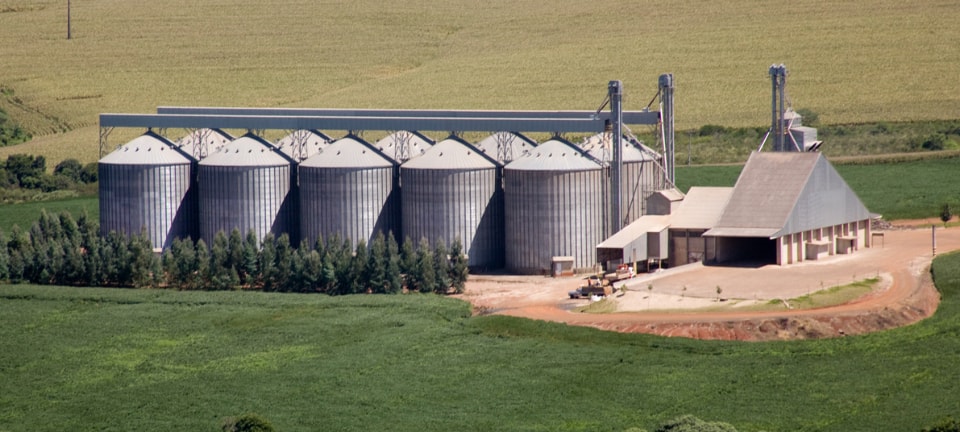RIO DE JANEIRO, BRAZIL – Despite the crisis and the pandemic scenario, agribusiness has been showing positive results, helping to reduce the size of the Brazilian economy’s downturn; additionally, it should power the rebound, once it starts, according to figures from the sector and experts heard by UOL news site.
It was the only economic sector that had a positive result in Q1 2020 GDP. While industry and services contracted, agriculture and livestock grew 1.9 percent compared to the previous three months. The land generated R$120 (US$24) billion in revenues and by the end of the year, with record harvests, crops should yield R$697 billion.

In exports, the agricultural sector generated a net US$6.7 billion in gains in the trade balance between January and April, representing US$18.3 billion in shipments abroad and US$11.6 million in imports. Foreign sales rose 17.5 percent over the same period last year. Agribusiness participation in total exports rose from 18.7 to 22.9 percent in the four-month period ended in April.
Brazil shows its strength at a time like this, when most of the grain producing countries are bitterly losing due to the coronavirus. “We have found a way to give security to the producer, yet without stopping production,” Tereza Cristina, Minister of Agriculture, Livestock and Supply, said at an industry online event.
For the president of EMBRAPA, Celso Moretti, the crisis and the pandemic also put the sector in a “complicated moment”, but he sees good prospects. “Agro will be an engine of recovery for the Brazilian economy because producers, despite all the difficulties, have achieved a record harvest.”
Exports on the rise
Some of the main agribusiness products broke export records in the first four months of the year. This was the case of soybeans (16.3 million tons), soybean meal (1.7 million), beef (116,000), pork (63,000) and cotton (91,000). Brazil’s number one customer, Asia, with China at the top, accounted for 47.2 percent of Brazilian shipments, up 15.5 percent from the same period in 2019.
The scenario is very good for soybeans, with the Chinese demand being fueled by the revival of pig farming, which needs soy meal. Added to high prices and the high dollar, foreign demand generated record sales, according to Rafael Ribeiro, an analyst at Safras & Mercado.”Not only the beef market, but also the pork and poultry markets are booming,” Ribeiro said.
Record harvest
The leading agricultural product, soybean yields are expected to reach 121 million tons this year, according to the National Supply Company (CONAB) – an increase of 6.7 percent over the last harvest.
“The coronavirus issue for Mato Grosso soy was virtually irrelevant because, when the outbreak occurred here in Brazil, our crop was already harvested,” says Lucas Costa Beber, Administrative Director of the Brazilian Association of Soybean Producers (Aprosoja-MT).
This year’s grain harvest is estimated at 250 million tons, an unprecedented volume, with soybeans leading the way, but also thanks to the increase in crops like rice.
In a quick count, the total volume of food produced in Brazil is able to sustain 1.5 billion people, or seven times the Brazilian population. In the last ten years, the total supply of the agricultural sector has grown 68 percent, while exports have grown 87 percent, according to recent data from CONAB.
Sérgio De Zen, CONAB’s new CEO, highlights that this year there was a 15 percent increase in the supply of products for export and the opening of at least twenty new markets abroad. “The size of the crop stands out, it’s enormous”, he says.
Corn: ahead of the US
The second largest crop in volume in the sector, corn is expected to exceed 100 million tons, yet another record. “Brazilian corn is the most demanded cereal by the international market,”
according to Alysson Paolinelli, leader of the Brazilian Maize Producers Association (ABRAMILHO)
The representative points out that, for the second time, Brazil’s production surpassed that of the US in export volume, with 37 million tons shipped, compared to 35 million tons from the competing country.
Crisis for flowers and shrimp
EMBRAPA’S Celso Moretti concedes that the current crisis has adversely affected some segments. “Floriculture is in a very difficult moment because there are virtually no more events, congresses, trade shows and other opportunities that use cut flowers,” said Celso Moretti, president of EMBRAPA
“The fruit and vegetable segment was also affected from a direct delivery perspective due to the closure of bars and restaurants,” he added.
Another sector with a drastic reduction in marketing was aquaculture: shrimp sales alone fell 80 percent, according to EMBRAPA, the governmental development agency.
Cotton crop source of concern
In the cotton industry, whose production is also breaking records this year (2.8 million tons and 70 percent of the crop already sold abroad), there is concern about the harvest. “The pandemic has affected us now, because it came in the middle of the crop, when we harvest and process the fiber,” said the president of the Brazilian Association of Cotton Producers (ABRAPA), Milton Garbujio. “If it continues, we will have labor problems,” he says.
The industry representative expects a reduction in the next harvest’s planted area, since the purchasing market is starting to give signs of deceleration. “The textile industries are stopped – because of closed shopping malls and stores. As a result, the market is slowing down, and the [cotton] production is well stocked.”
Source: UOL

